On the Road is a weekday feature spotlighting reader photo submissions.
From the exotic to the familiar, whether you’re traveling or in your own backyard, we would love to see the world through your eyes.
Athenaze and Ariobarzanes
Athens is a city in which we have both spent a considerable amount of time. For us, it feels like a second home rather than a tourist destination. Our most recent visit came at the end of our hiking trip to Andros (detailed in our two earlier On The Road posts). We visited all of our favorite haunts, both ancient and modern. The effects of the pandemic were obvious: everyone was (mostly) masked in public settings, both indoor and outdoor, and although Greece had opened itself up to tourism, there were very few visitors at most of the main monuments relative to what we’ve seen in past years even in low season. Restaurants were open only for outdoor dining, which wasn’t really a problem since most restaurants have lots of outdoor seating already.
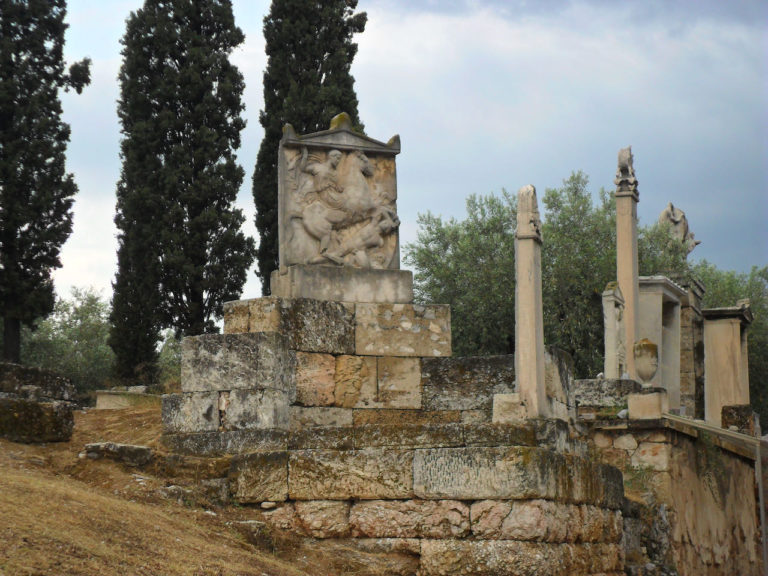
This is the so-called “street of tombs” in the Kerameikos, one of Athens’ least-visited but most atmospheric archaeological sites. In antiquity, the Kerameikos lay just outside the city’s main western gates, and was known for the tombs that lined the roads leading out of the city. The tombs on display today are mostly reconstructed—the original sculptures are housed in either the Kerameikos Museum or the National Archaeological Museum. The monument in the center of the shot is a cenotaph commemorating the Athenian cavalryman Dexileos, who was killed in battle in 394 BC.
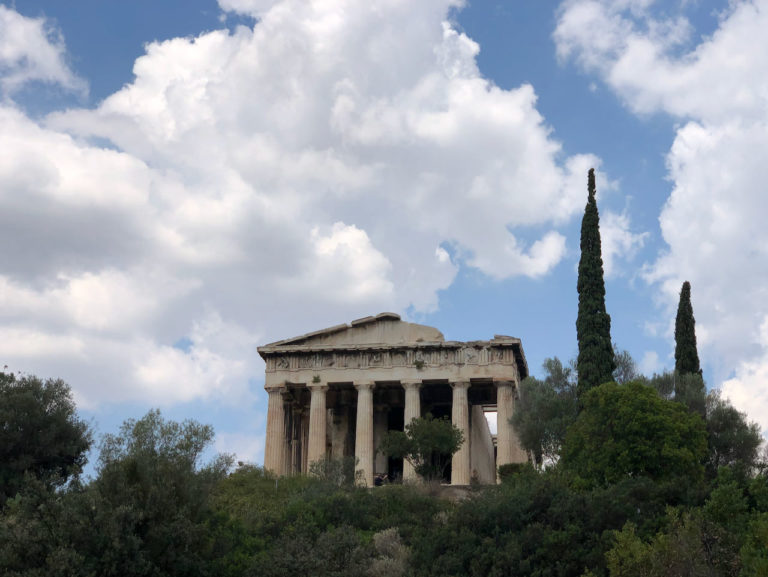
When most people think of Athens, they think of its ancient monuments. This is one of the best-preserved temples in Greece. Built in the fifth century BC on a hill overlooking the ancient Agora, it was originally dedicated to Hephaestus, and was later converted into a church of St. George (which explains its unusually fine state of preservation). For a long time people believed that it was a temple dedicated to the Athenian hero Theseus, and for that reason the neighborhood near it is known today as Thissio.
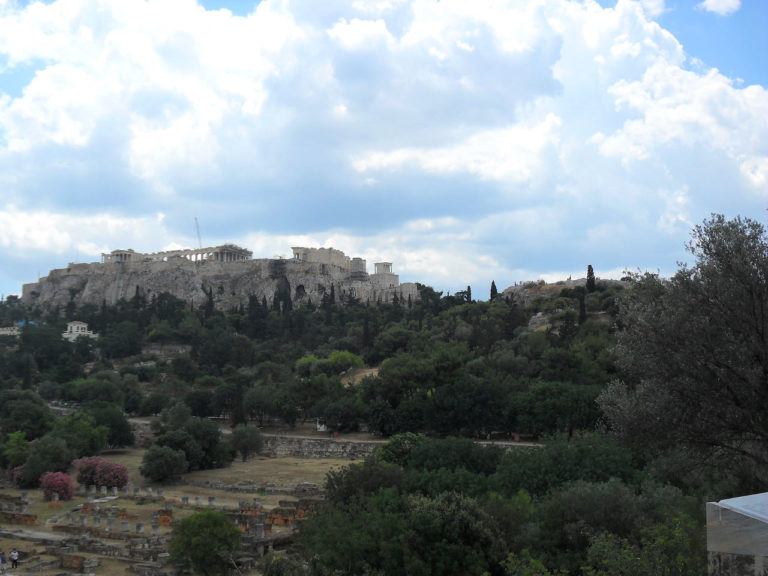
This photo was taken at the Temple of Hephaestus, looking southeast toward the Athenian Acropolis. In the foreground is the Agora, and to the right of the Acropolis itself is the Hill of Ares (Areopagus), where, in the mythology as told by the Greek tragedian Aeschylus, Orestes was acquitted of killing his mother Clytemnestra. From right to left, the buildings visible on the Acropolis are the Temple of Athena Nike, the Propylaia (the monumental entrance), the Parthenon, and the so-called Erechtheion.
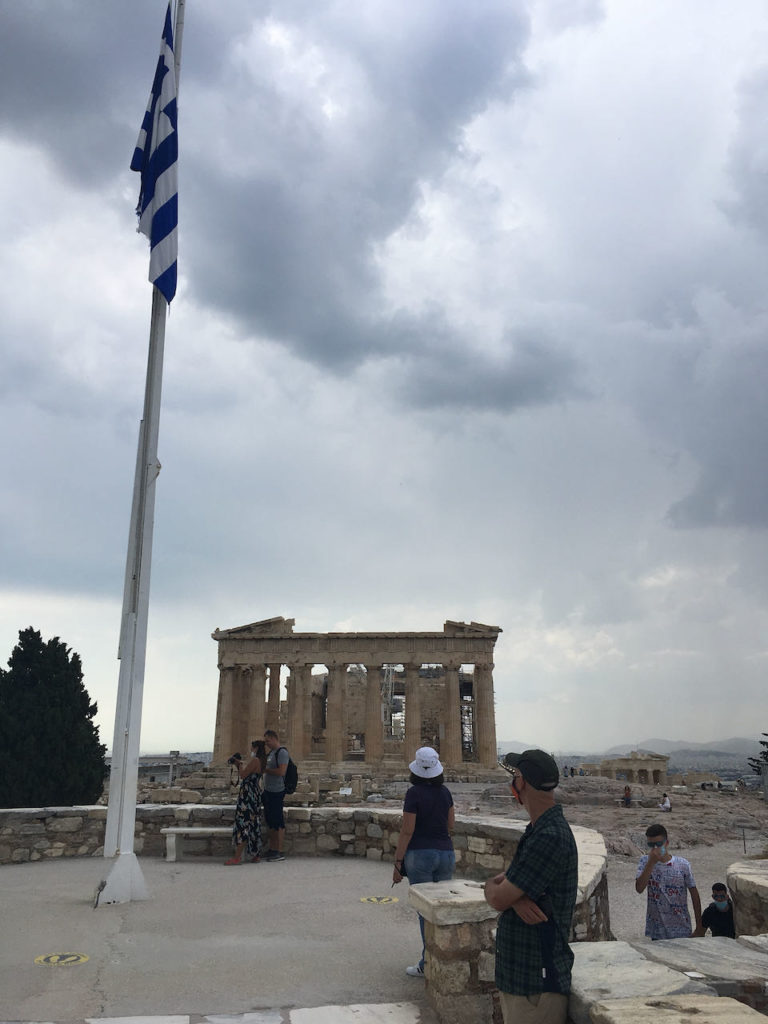
This is a shot Athenaze has wanted for years (it’s hard to get because the view is usually obstructed by too many tourists): it is a view of the Parthenon’s east façade from the easternmost promontory of the Acropolis. The foreground of the shot is dominated by the Greek flag. Near this point is a plaque that commemorates two members of the Greek resistance (Manolis Glezos and Lakis Santas) who climbed the Acropolis on May 30th, 1941, to take down the Nazi flag that had been raised on the monument after the German occupation of Athens. This was one of the earliest acts of Greek resistance against the Nazis. Both men became folk heroes and survived the war (in spite of being sentenced to death in absentia by the Germans).
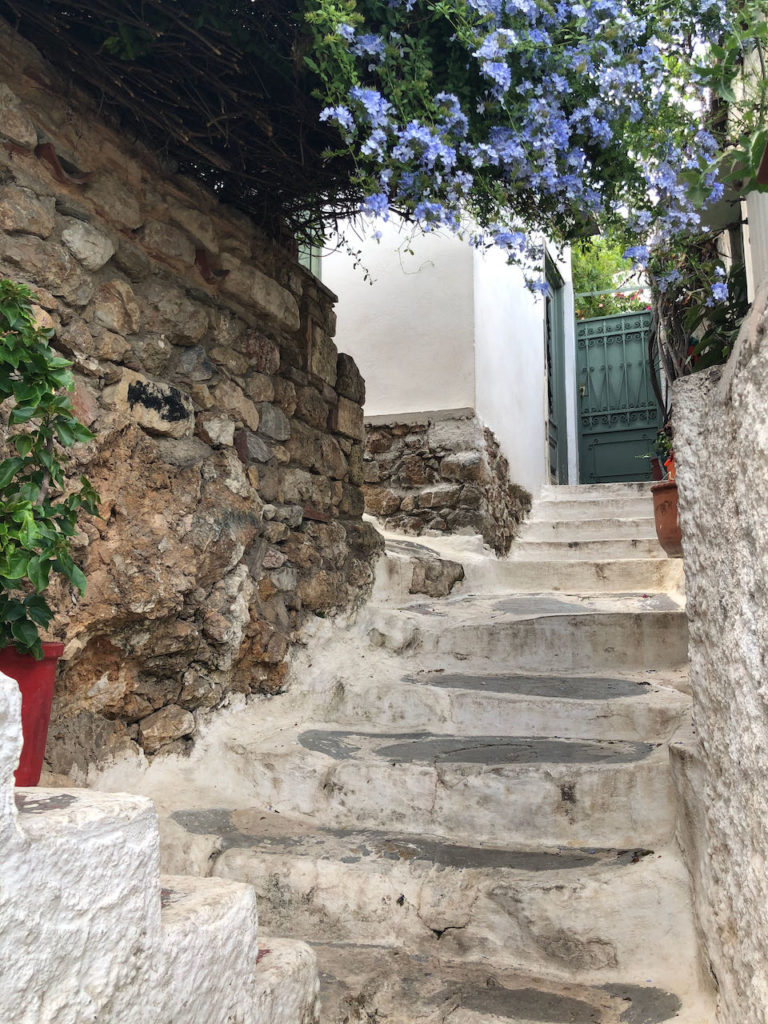
High on the northeastern slope of the Acropolis is the neighborhood of Anafiotika, “Little Anafi”. It was settled primarily by workers who moved to Athens from the island of Anafi shortly after the Greek War of Independence (fought against the Ottoman Empire from 1821-1830). The architecture of the neighborhood reflects the architecture of the Cycladic islands in the early 20th century, especially in its whitewashed houses and narrow staircase streets.
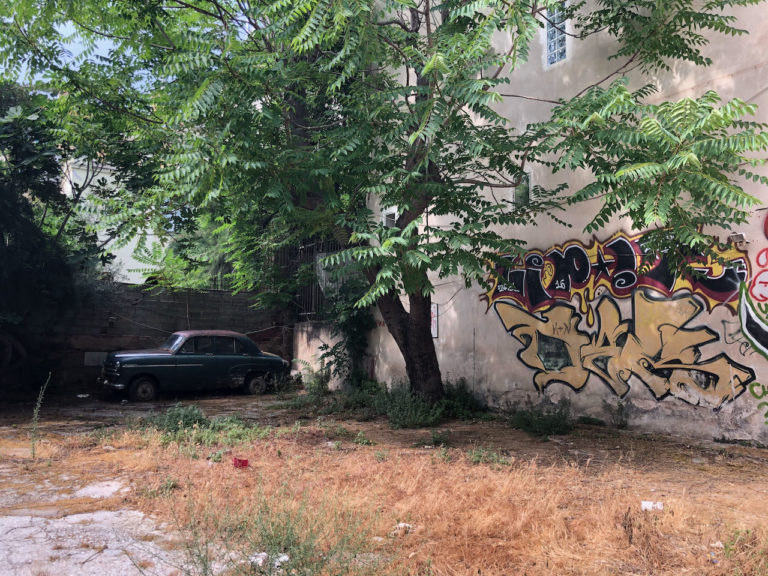
This is a shot of an abandoned parking lot in Plaka, one of the oldest districts of Athens. We were struck by the juxtaposition of the classic car (model unknown) and the very modern graffiti.
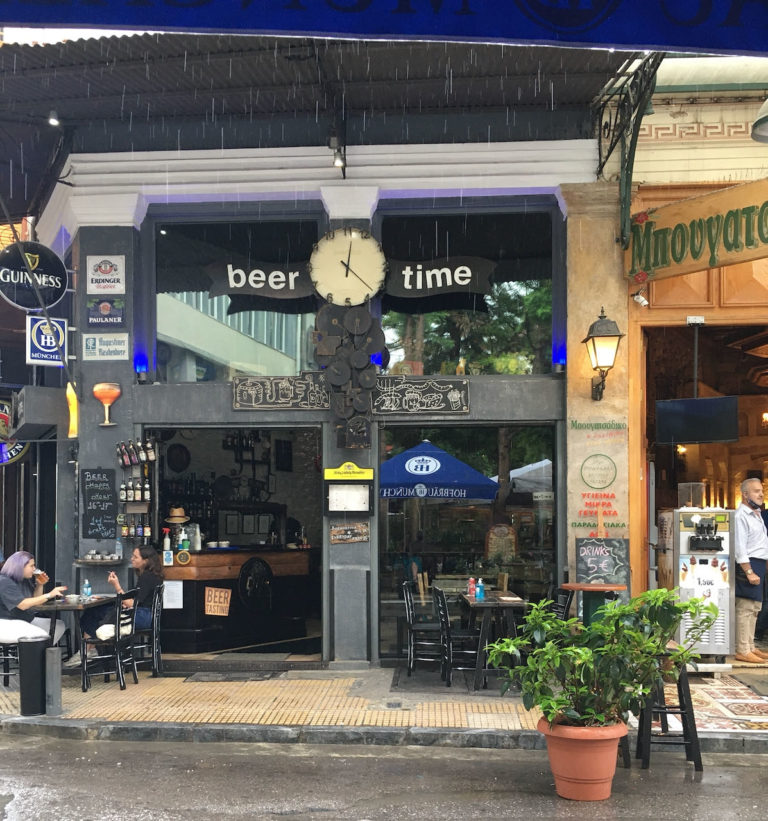
Good beer was hard to find in Athens until just a few years ago. The Greek microbrewing scene has exploded in the last 5-10 years, and Athens now hosts a number of dedicated beer bars. This is one of our favorites, BeerTime, which sits in Plateia Iroon (“The Square of Heroes”) in the Psyrri neighbourhood.
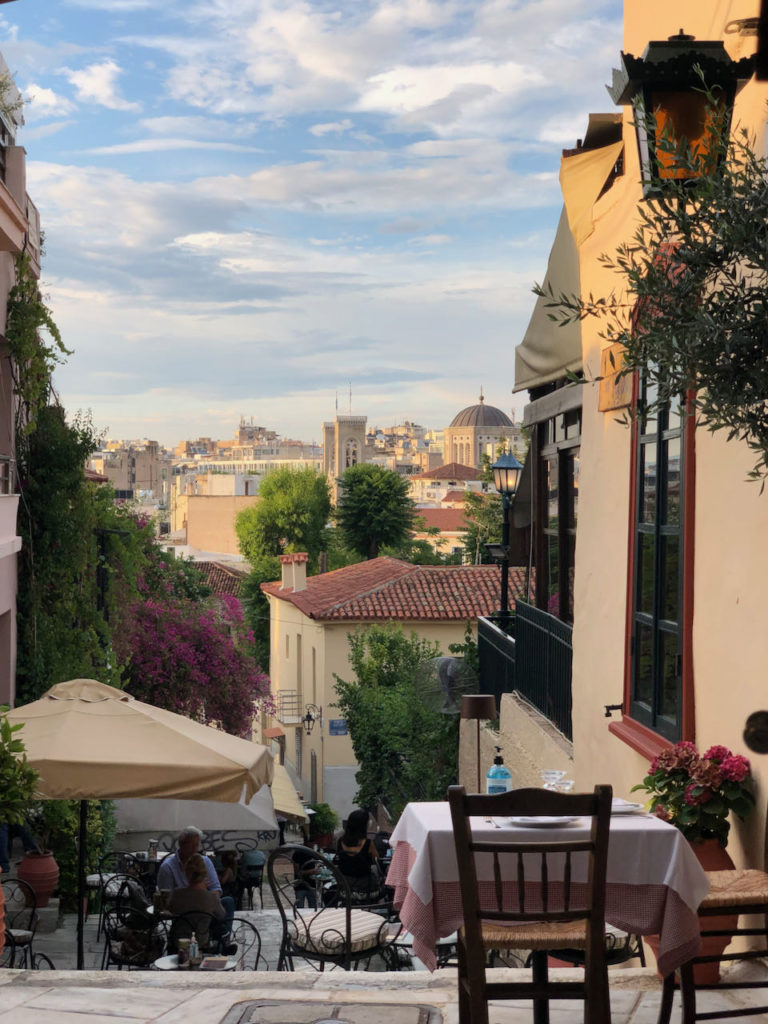
For us, no trip to Athens is complete without a visit to Tou Psarra (“The Old Tavern of Psaras”). Established in 1898, it is one of the many tavernas in Plaka (one of the oldest districts in Athens), where it sits on the northeast slopes of the Acropolis. Although the restaurant occupies two neo-classical buildings, most of the seating is on the terraces and stepped streets outside. The view here is to the north, down the slope of the Acropolis and toward Mitropoli (more formally, the Mitropolitikos Naos, or Orthodox Cathedral of Athens).

JPL
Wonderful photos and fascinating stories accompanying them. Thank you.
p.a.
Great stuff, and the last photo could be used as a promo (as if they need any) by the Greek tourism groups in their ads.
stinger
Athens “feels like a second home” — how sweet is THAT??
There is something about weathered stones that just gets to me. And yet that last shot, even with modern cafe seating and antennas and — sanitizer pump? — is finger-kiss PRIMO. The softness of the light on the domes and towers, the street light and leaves in the foreground — wowza. Great photography, and a place I now more than ever want to see for myself!
arrieve
This has been a really wonderful way to start the day. Thank you!
WaterGirl
That final photo, wow!
I don’t want to take away from the conversation about this amazing post, but when you get done commenting on that, maybe you guys can let me know how you feel about 3-part series all on the same subject being aired in the same week? I thought it would be nice for continuity, but I find that I can’t always accurately predict what folks will like and what they won’t. :-)
I know you all loved reading about this trip to Greece, so the conversation I’m suggesting isn’t about how you liked this series in particular.
stinger
@WaterGirl: More 3-part series on Greece — upvote!
Seriously, I like continuity, while on the other hand a weekly appearance just stretches out the pleasure. So either way is fine with me. I can never thank you and Alain enough for OTR.
Ariobarzanes
We were really lucky with that final photo. It had been uncharacteristically rainy in Athens during our visit (which you can definitely see in some of the other shots), and the clouds had broken just in time to let in the evening sunlight, which we wouldn’t have been able to capture had we not chosen to grab dinner during “tourist” hours (locals don’t eat until 9 or 10)…
SkyBluePink
This series has been delightful!
stinger
Question for Athenaze and Ariobarzanes: How do the elderly get around in places like Andros and Athens? I want to see Greece, but my poor knees!
SkyBluePink
@WaterGirl:
I’m with stinger- On The Road is a joy either way.
@WaterGirl:
Betty
@WaterGirl: I think it’s a very good way to get a deeper sense of the place being featured and allows a bit more narrative about the visitor’s experience. So, good job!
JanieM
Thanks for a great series — varied settings, beautiful images, wanderlust triggered. I especially love the shot of Anafiotika, but also, like stinger, get a twinge in my knees at the very thought. Next best thing: travel with OTR.
J R in WV
@WaterGirl:
I agree that short series of related photo sets, or really any photo sets by a single photog, are better than separated by a week or more. I know people could look the previous set of photos when the nest set shows up — but that’s kind of awkward…
Great photo set of Greece, folks. Great! The light in that last shot~!!~
Athenaze
@stinger:
The towns themselves on Andros are fairly small and mostly on the coast. So, walking there isn’t so bad in the main towns, but plenty of people just drive. Most people drive between towns. We saw very few people out walking in the countryside. In Athens it depends on where you are and where you want to go. There are buses, trams, and a subway system, plus tons of cabs, to get around the city. The most popular tourist stuff (except the Acropolis) are in a relatively flat part of the city. The Acropolis does have a lift for people who can’t make the stairs that can be accessed more or less by car. For example, you can get fairly close to the lower part of Anafiotika by car.
But otherwise, there are a lot of hills in Athens (and Greece in general). Sometimes it feels like you’re always walking uphill or downhill. In some cases, side streets are steep enough that the “road” is a set of stairs. But there are always ways around by car. We don’t really know how to navigate Athens by car because we just walk or use public transportation when we are there. (Ariobarzanes has no ACL or meniscus in one knee, and he does okay although the downhill portions can be tough.)
You will see, in Athens and in the countryside, older people out walking up the stairs, hills, etc. They just take their time and do it at their own speed. I would guess that the hills, etc, like the heat, are just a reality of life.
way2blue
Very enticing photos & commentary. Thanks. Would love to re-trace your steps with your knowledge of the history embedded in the ancient ruins.
Athenaze
@way2blue: Athenaze and Ariobarzanes Tours of Greece coming soon! (hahaha, I wish I could do that for a living.)